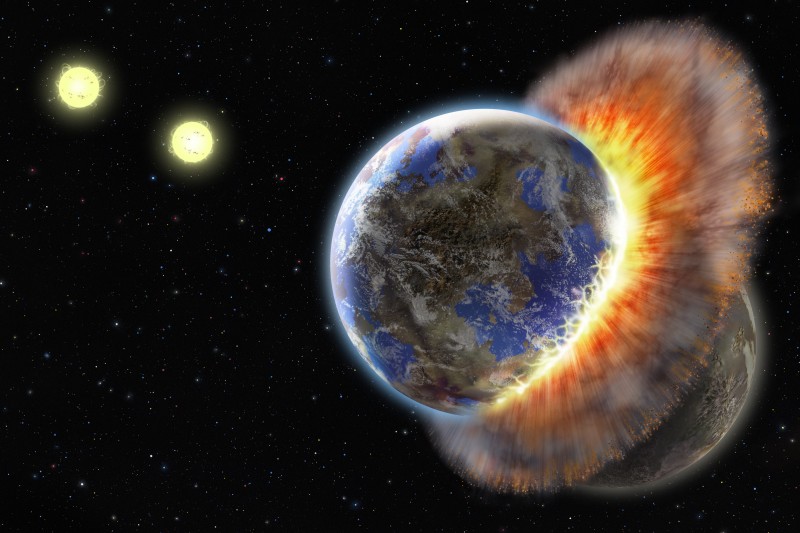Credit & Copyright: Lynette
Cook
Explanation:
For astronomers,
close binary star system BD+20 307 originally stood out because it
is extremely dusty.
A substantial amount of
warm dust surrounding it causes
the system to appear exceptionally bright at
infrared wavelengths.
Of course, dust associated with planet formation is often
detected
around young stars, stars only a few
million years old.
But the BD+20 307 system has now been found to be at least a few
billion years old,
an age comparable to the age of our own Solar System.
The large amount of warm dust is
likely the debris from a relatively recent
collision of planet-sized
objects on the scale of, say, Earth and Venus,
in the BD+20 307 system.
Reminiscent of the classic scifi novel
When
Worlds Collide,
the dramatic illustration offers a depiction of
the catastrophic event.
Ironically, this indirect evidence of a destructive
planetary collision could also be the first indication that
planetary
systems can form around
close binary stars.
BD+20 307 is about 300 light-years distant toward the headstrong
constellation Aries.
1999 2000 2001 2002 2003 2004 2005 2006 2007 2008 2009 2010 2011 2012 2013 2014 2015 2016 2017 2018 2019 2020 2021 2022 2023 2024 2025 |
Yanvar' Fevral' Mart Aprel' Mai Iyun' Iyul' Avgust Sentyabr' Oktyabr' Noyabr' Dekabr' |
NASA Web Site Statements, Warnings, and Disclaimers
NASA Official: Jay Norris. Specific rights apply.
A service of: LHEA at NASA / GSFC
& Michigan Tech. U.
|
Publikacii s klyuchevymi slovami:
binary star - dust - planets - dvoinye zvezdy - Planety u drugih zvezd
Publikacii so slovami: binary star - dust - planets - dvoinye zvezdy - Planety u drugih zvezd | |
Sm. takzhe:
Vse publikacii na tu zhe temu >> | |
